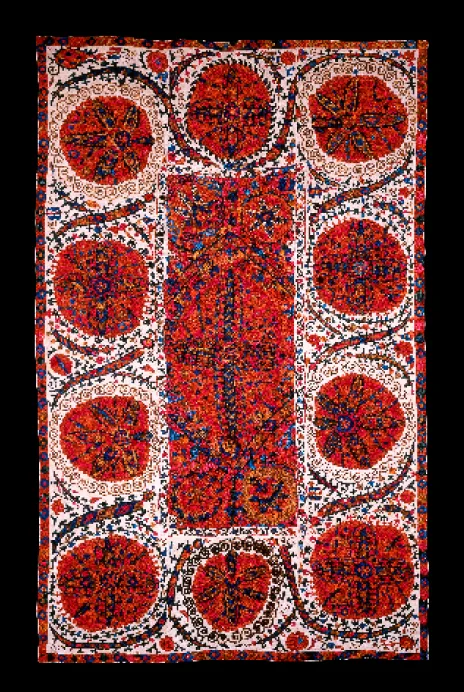
Ikat is a warp-faced plain-woven fabric in which all colors are applied to the silk yarns in a multi-stage tie-dye resist process before the yarns are placed on a loom and woven. The word ikat is derived from mengikat, a Malay-Indonesian verb meaning to tie or bind. The Central Asian word for ikat technique is abrbandi: “abr” – cloud, and “bandi” – binding. The oldest known silk-warp ikat fragments of probable Central Asian origin are in the Tokyo National Museum.
They are dated to 552 – 644 CE. The best of ikat design and production in Uzbekistan dates from the early 19th century with their complex designs. The greatest then range through the mid 19th century with compositions that retain complexity in areas, but also contain other areas of solid color for the viewer to rest the eye.
You can learn more about the topic in the book-album "The Cultural legacy of Uzbekistan in private collections of the USA and Canada" (volume XXXI) in the series "Cultural Legacy of Uzbekistan in the World Collections".
The main sponsor of the project is the oilfield services company Eriell-Group.
